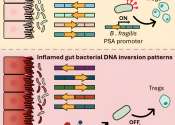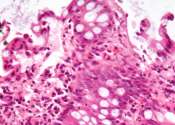Bacteria in the intestine that change in response to inflammation could have an impact on our immune system
Gut bacteria have emerged as a focal point of scientific exploration, with their intricate roles in our metabolism, nutrition, and overall health coming into sharp focus. New research from the Technion—Israel Institute ...
16 hours ago
0
71









